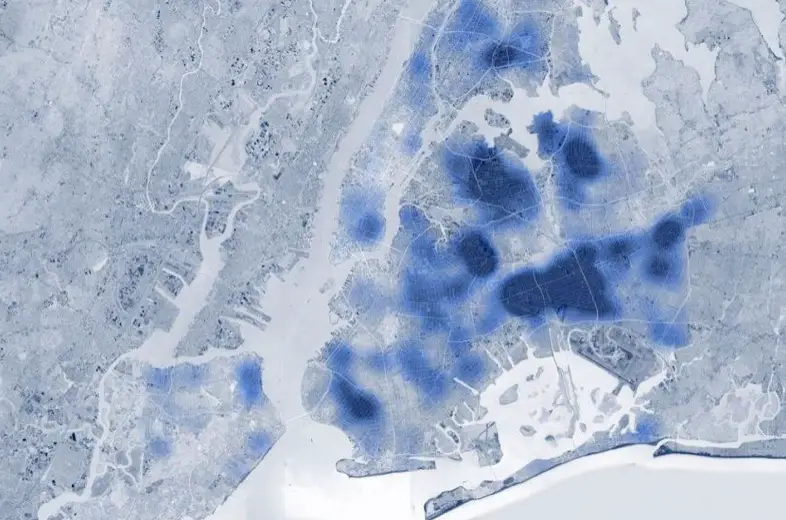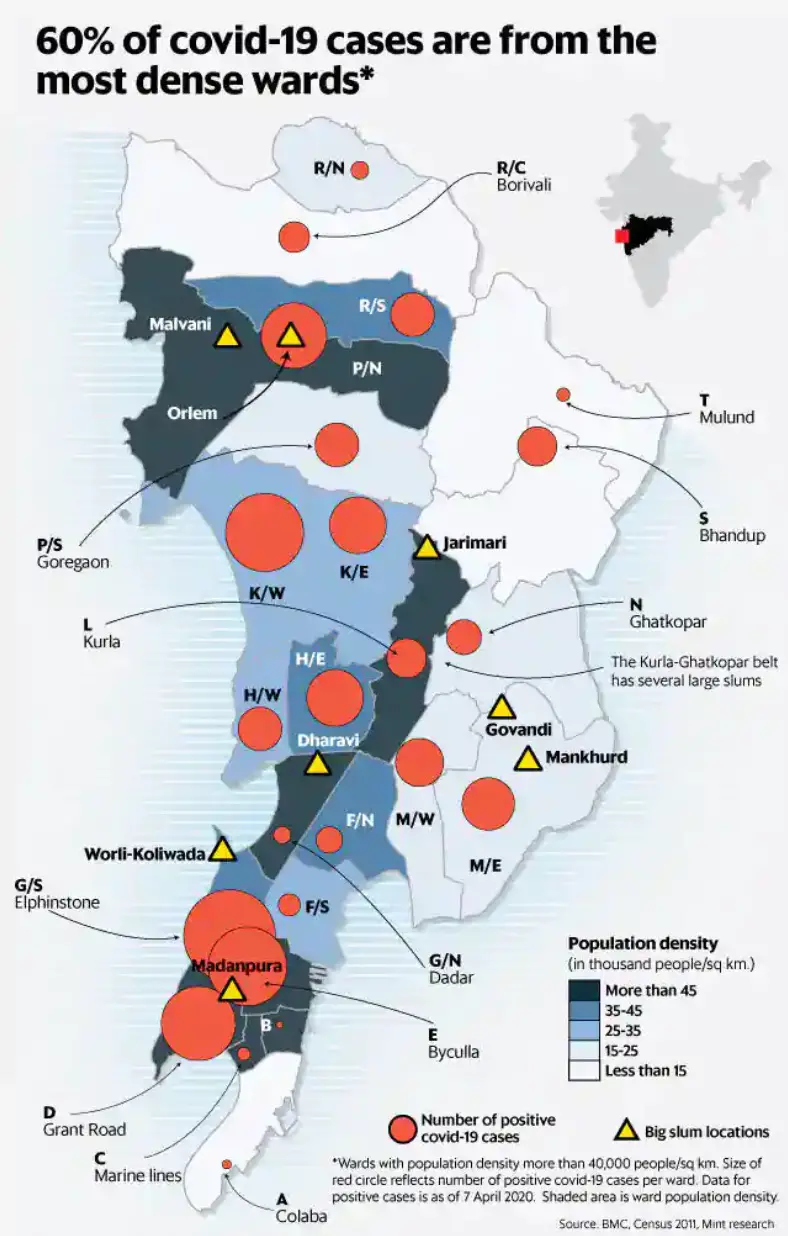This is a five-part series that revolves around understanding the current situation of Indian cities during the COVID-19 outbreak, and how resilience can be applied within our cities as a response to the resolutions of ‘social-distancing’. In this third part, we shall explore the commonalities between hotspots; urban form and urban density.
This post was created by the author during his internship period and is also available at Housing and Urban Development Corporation Ltd (HUDCO), New Delhi.
Previous in Series: History of Bombay and New York City Pandemics (Part 2 of 5)
Next in Series: Pandemic hotspots: Impact of COVID-19 on master planning process (Part 4 of 5) – to be published soon.
As of today, over 350,000 cases have been reported in New York City, the epicentre of the COVID-19 cases in the US. Figure 4 shows us the total number of cases as of June 5 and also shows the confirmed deaths caused by COVID-19.

Source: The New York Times
COVID-19 has virtually crippled the public health systems of New York. And this is the pattern that is seen in most of the global metropolitan cities. The spread of the virus can be owed to factors like population density, household density, ability to contain the virus by quarantining and measures adopted to practice social distancing. But how did this happen? When a small number of cases were reported in the city, there was an initial action to contain the virus by the National Guard and medical professionals began tasting and tracing. But the number of cases began to surge with the next few days and schools and large businesses was instructed to be shut down. However, instead of being strict with lockdown procedures, the city had allowed certain small businesses to continue and people to move, which exploded the number of positive patients in the city.
Since the 1990s, the population has increased over a million, with an increase of a population density of 17,000 people per square kilometre. Due to its high living standards, migrants are forced to live in hidden slums in the city. The city’s poor are located in “illegally subdivided apartments” as a result of the informal rental market and the affordability crisis (Desai, 2020). These illegal living quarters – consisting of apartments, basements, attics, lofts and sheds – that housed many immigrants were located in areas where the COVID-19 cases are maximum within the city. Another reason the density accounts for the is the mass transit. As there was no strict procedure applied, people still continue to move around in rapid transit systems and the virus spread further.
Apart from population density, household density also plays a key role in the spread of the virus. A study was conducted to recognise the determinants of COVID-19 in NYC and the results state that density within households appear to increase with magnitude of positive tested patients. This is owed to the stay-at-home order, as it increased the probability of within-household infections. The same could not be said for neighbourhood density, as it did not explain any of the variation in share of positive tests (Almagro and Hutchinson, 2020). Also, the community transmission of the virus was further increased due to the differential implementation of community mitigation strategies, like school and workplace closures, cancellation of mass gatherings, etc (Bialek et al, 2020). Looking at the hardest hit areas in New York, that is Queens, Bronx and Staten Island, they are home to New York’s hidden slums.

Source: Situ Studio
Figure 5 shows us the location of such hidden slums. These areas have a lot of illegal housing with overcrowded households and buildings which are in dangerous conditions, that violate housing maintenance codes and fire rules.
We can make some observations from the above. High urban density, more than being a cause of the spread of the virus, is purely an indicator to relate the global hotspots in the world. The household density can be regarded to be more detrimental to the spread of the virus. And this can be proved by looking at the hardest hit areas within New York, where illegal housing is seen, with conditions of overcrowding.

Source: BMC
Let us see if the above hypothesis is true for the condition of Mumbai city. Figure 6 shows us the number of covid cases from the most dense wards, with demarcations of the slum locations and number of positive cases. The large hotspots of Mumbai city for the outbreak are all located at slums within the city. Also, in every other ward where there are significant shares of Mumbai’s COVID-19 cases, there is a large slum situated. (Livemint, Alexander, 2020). This should be easy to understand why. The settlements in the slums of Mumbai are highly congested, where social distancing is a physically impossible task. As per Census data, 60% of the slum households do not have private toilet facilities and 35% of the households needs to access community facilities like collecting drinking water and access public toilets located on the exteriors of the area. Since washing of hands is another needed action, the insanitary conditions and time restrictions on tap water adds to the challenge. Other reasons to the spread of the virus can be claimed by the late actions taken by the authorities to contain the virus.
Related Articles:
- Urban Planning & COVID-19 | Density, Travel Demand, Water & Hygiene
- Pragmatic Approach to Slum Rehabilitation in Mumbai City (Part 1 of 4)
- Pragmatic Approach to Slum Rehabilitation in Mumbai City (Part 3 of 4)
- Vote Bank Politics, Lobbying and Favoritism: Discrepancies of Slum Formation and Existence
Overcrowding (and hence household density) and the physical form of the household can be correlated with the spread of the virus. If you have around 5-10 people living in a room, with little or no access to basic services, it is bound to be a breeding ground for communicable diseases like COVID-19.
Previous in Series: History of Bombay and New York City Pandemics (Part 2 of 5)
Next in Series: Impact of COVID-19 on master planning process (Part 4 of 5)